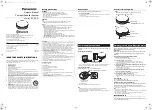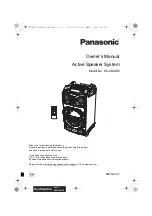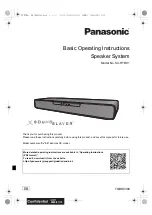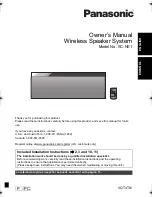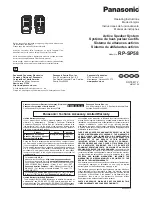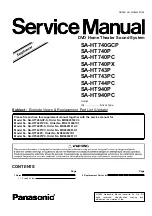
5
into its correct acoustic impedance and prevents the backwave from reflecting off the tweeter’s back surface plate, significant-
ly reducing high frequency smearing and phase/combing anomalies.
The MPS-1611P’s 6.5" polypropylene woofer uses a new ultra-low distortion motor structure with a number of proprietary
features. Its magnet shielding can provides for full magnetic cancellation/shielding, allowing the speaker to be used near CRT
monitors or other magnetic field sensitive devices without the worry of picture aberration or distortions.
Similarly, the self contained power supply uses a special toroidal transformer to constrain the external magnetic power sup-
ply field to non-interfering levels. Designed for world-wide use, the MPS-1611P is available in 100V, 115V, and 220/240V ver-
sions, all operating at 50/60 Hz.
The robust MDF cabinet uses internal bracing to optimize sonic integrity, and all corners of the front baffle are radiused to
minimize high frequency cabinet diffraction. Its special satin epoxy finish will stand up to years of heavy use.
5.
SPEAKER PLACEMENT
TWO CHANNEL SPEAKER PLACEMENT
The sound quality produced by your speakers can be significantly enhanced by careful attention to their placement. There
are several things that you can do to achieve an excellent monitoring environment in your room.
These four factors are essential to achieving excellent performance from your speakers:
A.
Height or angle
B.
Location away from walls or reflecting surfaces
C.
Separation between Left and Right speakers
D.
Vertical orientation of the speaker cabinets
A. Height or angle
Your M&K speakers are designed for very fast and accurate transient response. They will provide you with the best sound
quality and flattest frequency response when properly oriented relative to your ear. Ideally, the tweeters should be on the same
axis as your ears when you are sitting in your main listening position. If your speakers are mounted above or below this posi-
tion angle the speakers so that the tweeters are aimed at your ears when you are in the main listening position.
A green LED has been installed inside the front baffle of the MPS-1611P above the tweeter. This LED can be used as an
alignment too for final aiming of your tweeter. This LED can be used as an alignment tool for you speakers and indicates per-
fect on-axis alignment when the LED is at its brightest.
B. Location away from reflecting surfaces
Whenever possible, do not place your speakers directly on the mixing console. Contact with the console can create a build-
up of certain frequencies, particularly in the low to low-mid frequencies, that will cause uneven bandwidth reproduction.
Additionally, speakers placed on the console disperse sound onto the console as well as the listener. The reflected sound off
the console arrives at the ear slightly later than the direct sound. This results in comb-filtering, phasing and a general blurring
of the sonic image.
To avoid these problems, M&K makes a full line of stands and mount-
ing brackets that will help you properly install your speakers to optimize their
performance. Check with your M&K dealer or log onto our website at
www.mkprofessional.com for more information.
Remember to allow for adequate ventilation for your speakers. The
MPS1611P power amplifiers are mounted on the back of the cabinet and
these generate heat through the heatsink. Leave at least three inches of
clearance around the back of the speaker and do not place them close to
heaters or heating ducts.
C. Separation between left and right speakers (Figure 1)
The MPS-1611P is designed as a near to mid-field monitor. This gen-
erally means placing the speakers at a distance of 3 to 6 feet (roughly 1 to
2 meters) from the listener. Many engineers feel that creating an equilateral
X
Y
Z
FIGURE 1 SPEAKER SEPARATION
XY = YZ = ZX
















